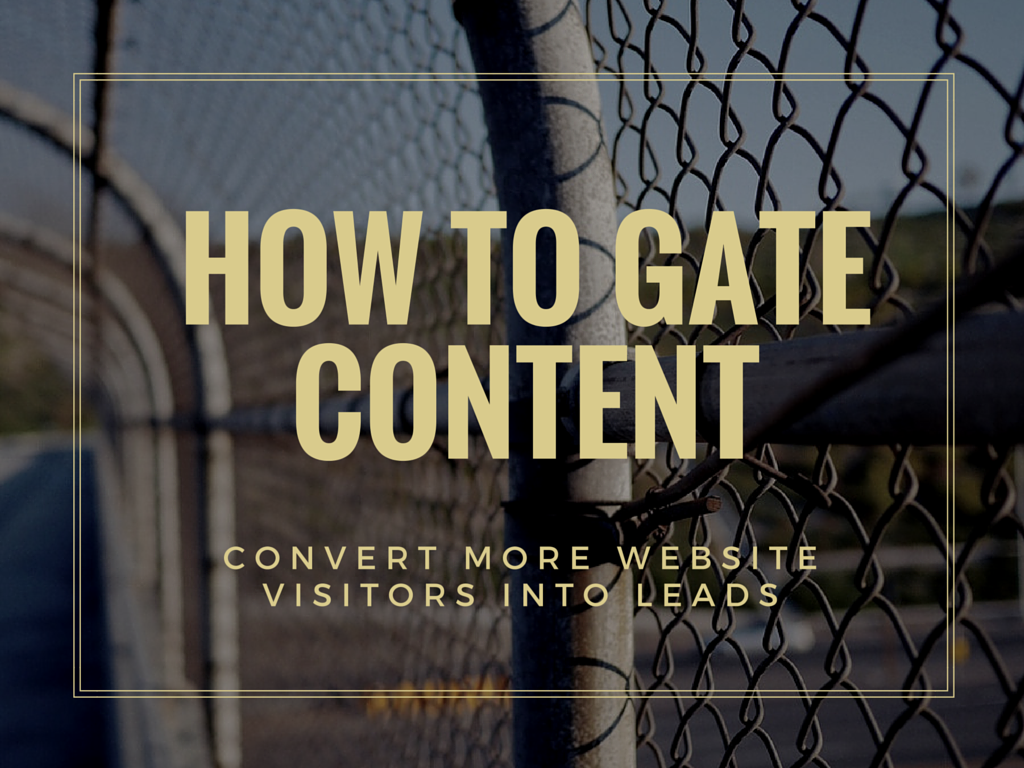- Nov 11, 2015
- By Jake Allspaw
- In Marketing Strategy and Planning
The Right Way to Gate Your Content and Capture Leads


Relevant content plays an undeniably powerful role in any lead generation strategy. Not only can it inform and motivate potential customers, but it also allows them to easily express their interest in your brand. But, you can’t give all of your content away without a hitch; most marketers take advantage of consumer interest in relevant content by requiring an exchange of information to receive more advanced content pieces like white papers or eBooks. Gating content — that is, placing certain content behind a door (most often a landing page with a form) that can only be unlocked if the lead provides their contact information — is often a necessary part of inbound marketing, but choosing when to gate and when not to gate isn’t always as cut and dry as it might seem.
Why Gate?
Gating off your most prestigious content is a common marketing best practice, but it can be awkward. It isn’t always easy to convince potential customers to fork over their information. But gating is a proven marketing method for a reason. It’s essentially a test to see how serious a lead is about becoming a customer. If they won’t even give an email address — even a junk email — to download your white paper, odds are pretty good that this isn’t a lead you should take very seriously.
However, if the lead passes that test, it’s a boon for both sides. The lead introduces himself or herself as a motivated and legitimate prospect with potential buying power. For the company, it’s another person to try and convert. For the lead, they gain access to something they clearly want to read, and that information may make them even more inclined to make a purchase. It’s a total win-win.
To Gate or Not to Gate
The benefits of gating content are quite clear, but not every piece of content lends itself to gating. Here are some guidelines for what content is best for gating.
- Industry Content: Content that informs leads about your industry, not about how great your company is, is ideal for gating.
- Longform Content: White papers and webinars take a long time to prepare, and they take a long time to consume. The trade-off of an email address for this type of content is well worth it.
- Proprietary Content: The last thing you want is for a competitor to get its hands on your content and claim it as their own. Putting up a gate makes it much more difficult for the theft of content ideas to take place.
If your content doesn’t meet this criteria, it doesn’t mean that content is subpar in any way. It’s just content that’s better suited for public consumption, such as blog posts. There’s a place for this type of content on any company’s website. Just remember that gating content that’s self-promotional in nature, or that would lead people to feel like they gave away their email address for nothing, is best distributed to the public with no gate.
When Gating Goes Wrong
It might seem like an email address or phone number isn’t a lot to ask for the great content you’ve created. But some internet users fear the worst, and it’s usually because they’ve been burned before. Perhaps their desire to read a white paper in the past was ruined by receiving a deluge of unwanted phone calls and emails.
That’s why it’s so important to get it right with gating. Gating sends a message to potential customers: “We give out some content to anyone, but we’re saving the good stuff just for you.” That means whatever’s sitting behind that gate has to be awesome. You’re asking a lot of your leads — it’s up to you to deliver the goods. But if you don’t, you can expect to pay the consequences, not just in the form of a lost lead, but also in the form of negative word of mouth and decreased conversion rates.
Gating Best Practices
The decision to gate is not as important as the choices you make after you decide to do it. Here are some best practices to keep your lead generation strategy churning:
- Make sure your content is worthy of gating before putting it behind closed doors.
- Leave basic content about your company and industry out there for general consumption. Put more specific content behind the gate.
- Include reassurance on your landing page that the only reason they’re giving their contact information is to receive the content.
- Ask only for necessary information at first, such as first and last name and email address. If a lead is truly motivated, they’ll give you the rest of their information over time.
Qualify Your Leads with Confidence
If handled correctly, gated content can serve everyone well. It’s a great way for businesses to qualify leads, and it allows those leads to get a little something extra. However, you can damage your company’s reputation if you don’t intelligently gate your content. Only the best, most exclusive industry content should be placed behind the gate, and the individual’s contact information should not be abused. If you follow these guidelines, you’ll be on your way to developing a strategy that facilitates more quality lead generation in no time.




